You are the LIGHT

- ISSUE 17
SPRING
LOVE ISSUE THE
5 From the editor
What if this moment is all there really is. What do we want from life?
6
The mindful five With brighter days ahead treat yourself to small acts of self love
8 The reading list
Our spring reading list is all about shared experiences of finding love
10
Five apps
These apps will help us achieve better focus and productivity, boost our minds and move us forward 12 The power of love
Our Kintsugi founder, Metanoia, on the importance of love and the healing potential found within it
16 What is love?
From family ties and friendship to passion and philanthropy, Annabel Harrison explores ancient variations of the word 'love'
All you need is love Nicola Chantler on how love raises our energetic vibrations
36
Rewriting our love story
What are our expectations of love – and can we change them?

44
Grief: the price we pay for love
How to keep going when those we love have gone
2 Contents
23
28 The anatomy of love Annabelle Spranklen delves into the science of enduring love
23
How does society affect our relationships asks Dr Asma Naheed

Managing Editor Dr Asma Naheed Editor Elle Blakeman


Editorial Assistants Paris Starr
Annabelle Spranklen

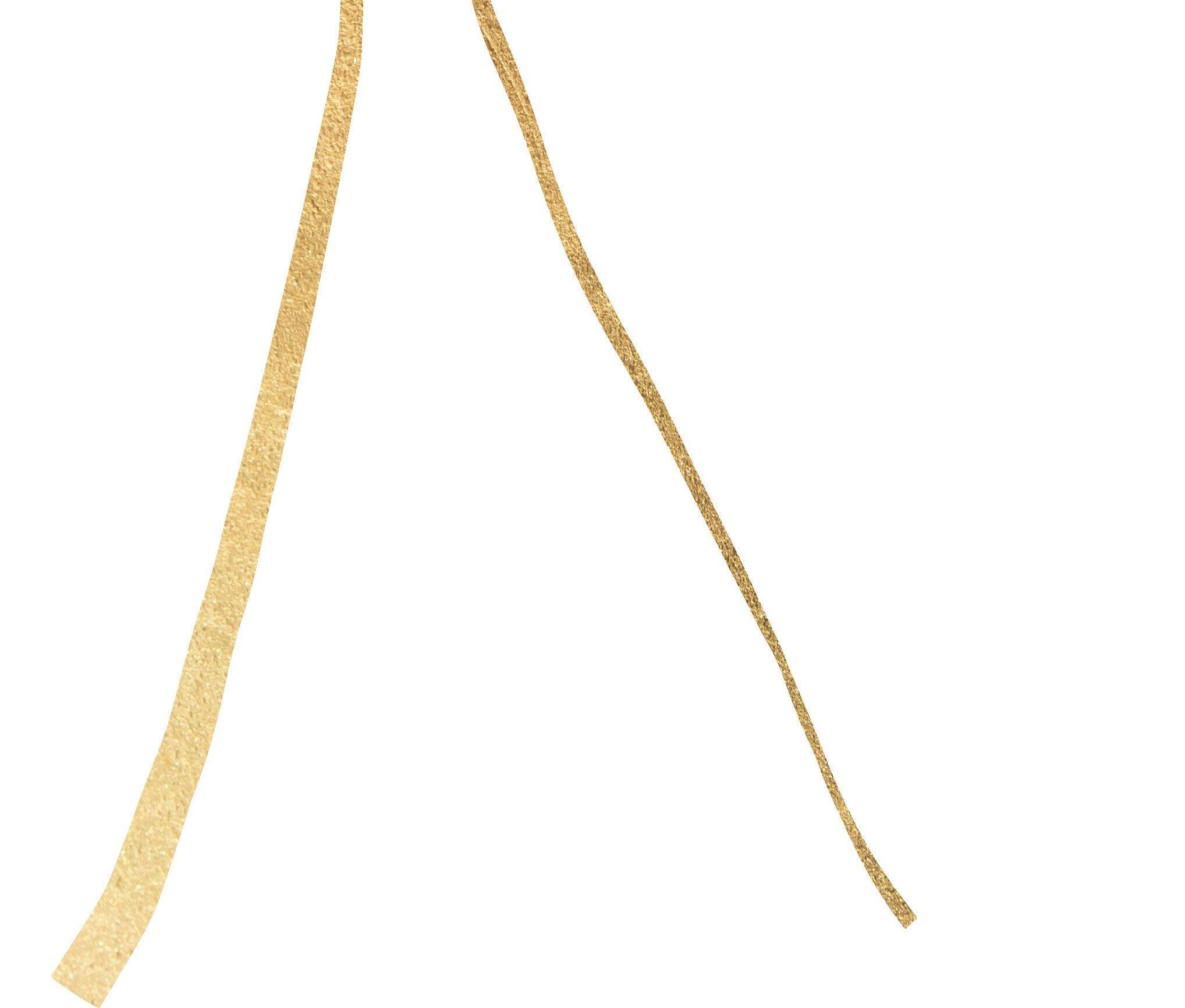
COVER IMAGE: PEXELS/FLIQA INDIA. IMAGES: PEXELS/JONATHAN BORBA/ TARYN ELLIOT 36
Editor-in-Chief Metanoia
can teach us 58
thy self
care for
66
what
do and do what you love
finding your passion
Creative Director Vanessa Grzywacz 50 Connect, Pray, Love Energy healer Trudie McConnochie asks what spiritual love
Love
How can we truly love others if we don't
ourselves first
Love
you
Anna Bartter on
72 Spring forward Claire Brayford on the new launches to brighten up our lives – and our skin – this season 76 Love and social dynamics
80 Self-care vs self-love Our columnist explores two often misunderstood concepts 82 Spiritual bonding
84
loving
The story of how two great poets met
Al-Wadūd The most
80

ILLUSTRATION: CLYM EVERNDEN. IMAGE: PEXELS/ELLE HUGHES
From the editor...

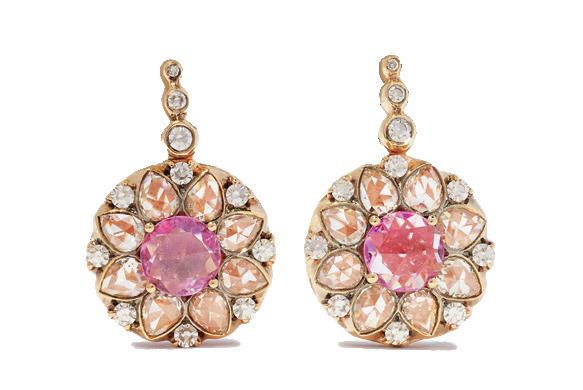
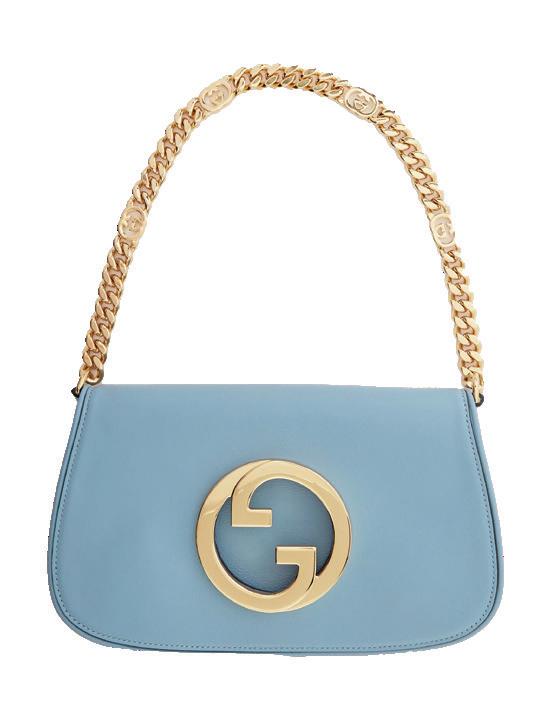

Welcome to this moment, the only one there is. Recently I was thinking about the concept of Metanoia – a change in your way of life thanks to a spiritual conversion. It is this change, this transformation, that we are most interested in at Kintsugi Space, this total change of heart towards a conscious, purposeful life. And as I thought about this a deep insight arose within me: happiness is an inside job. As is love.
At Kintsugi Space, under the careful, trained eyes of some truly inspired people and through serious inner work and cutting-edge technology we are producing some incredible results. We are raising energy levels for ourselves and our members, becoming more sensitive, more aware and grounded. People are reporting that life has become fuller, more colourful, more vibrant.

When starting from a calmer, cleaner, kinder and more grateful place, we can realise the wonder that lives within us all. That we exist, here in this moment is nothing short of miraculous.
Between the inner and outer world lays many sacred mysteries that we can never truly understand, only trust that they are there. So many things to cherish. Here I am, in this moment, finding myself as an essence’s seeker.
Here is what I know: hugging a person with a ‘good frequency’ immediately helps us reduce anxiety. Listening to a grounded voice can make us feel better. We need to notice how we feel when we look deep into someone else’s eyes?
Waking up early to contemplate the sunrise from the sea makes us feel happy. Watching the stars makes us feel more spacious inside, floating on water feels like we are weightless.
The journey has just begun. If we look we can find new inspirations for how to live well, eschewing the prevailing advice that was once so tempting (Do more! Buy more!) but now feels passé. This moment all we need to worry about.

Lord Byron once noted that that there are only four questions of value in life, and the answer to all of those questions is ‘love’. As our Kintsugi founder notes in her very personal column on page 12, love is an intensely powerful force. It has the ability to clear the most challenging of paths, to offer hope, light, peace, forgiveness. To give us a reason for all that we do in life. If we start from a place of love, it is hard to go wrong.
We have dedicated this issue to love – exploring what love means to different people, how we express it to others, how we show it to ourselves and how we feel when it is gone. We explore the many different versions – from family ties and friendship to passion and philanthropy, spiritual connections to a passion for work and finding what you love to do. Wishing you all love, peace and Metanoia our dear readers.

EDITOR'S LETTER
Evil Eye Box, £250, Michael Aram
Kurkdjian 18-karat pink gold, sapphire and diamond earrings, £9,170, Selim Mouzannar
Rich Revitalising Essence, £84, No.1 De Chanel
Versailles: From Louis XIV to Jeff Koons, £850, Assouline
Blondie leather shoulder bag, £2,340, Gucci
The Mindful 5
With brighter days ahead, spring promises fresh starts and time for personal renewal. So treat yourself with these gifts – perfect for little seasonal acts of self-love
SPRING SILKS
A collaboration with couture lingerie designer Carine Gilson – and handmade in Brussels using the finest silk – our kimono and pantaloons set was inspired by the ancient ceramic art of Kintsugi, meaning ‘to join with gold’. Adorned with striking gold lines, the set was made for lazy Sunday lounging, when only the most delicate of fabrics will do.
Silk satin kimono and pantaloons, £1,575, kintsugispace.com

6
SUCCULENT NOTES
Scents act as instant mood-lifters, and they can help us celebrate seasonal shifts, like the transition from gloomy winter to vibrant, hopeful spring. This new fragrance from Jo Malone London does just that: it’s a zesty awakening, with rose petal notes and succulent pear.
Nashi Blossom Cologne, £115, Jo Malone

SIPPING PRETTY
There are few things more satisfying than a first hit of espresso in the morning – and how better to begin your day than sipping from this eye-catching cup and saucer set? Crafted from fine porcelain in Italy, it features vibrant yellow, pink and green, with hand-painted gold trims. Your daily morning ritual just got a little more indulgent. Gold-plated porcelain espresso cups and saucers, £120 for set of two, La DoubleJ

LIGHT IT UP
Candles cast a beautiful glow and help us unwind, infusing space with fragrance and calm. We love this scented offering, designed by Luke Edward Hall and inspired by the wonder of Rajasthan’s Rambagh Palace. Expect floral and spicy notes from a delicate pot that, once the wax has melted, will be a beautiful ornament.
Rajathra Palace Amphora Candle, £650, Ginori 1735 x Luke Edward Hall

GREEN FINGERS
Gardening is therapeutic on many levels. Being around nature can make you feel at peace, while digging, planting and watering are an escape from the stresses of daily life. And these pretty pastel planters from Soho Home are just the thing to help you get green-fingered this spring.
Finley planter, from £70, Soho Home

7
The Reading List
Our spring reading list is all about finding love in shared experiences, embracing our differences and celebrating the natural world
What Women Want: Conversations on Desire, Power, Love and Growth

MAXINE MEI-FUNG CHUNG (HUTCHINSON HEINEMANN)
‘What does a woman want?’ was Sigmund Freud’s greatest unanswered question. Psychotherapist Maxine Chung offers answers. Through the profound and moving stories of seven very different women, she sheds light on our fundamental needs and desires. From a young bride-to-be struggling to accept her sexuality, to a mother grappling with questions of identity and belonging, this book is a deeply intimate examination of our inner lives.
Empower Your Inner Psychic

THERESA CHEUNG
(THORSONS)
Ever experienced déjà vu? A dream that predicted a real moment or the sense that you’ve been somewhere before? This book helps us tap into our innate power to pick up signals and develop psychic abilities, using ancient systems, modern methods, exercises and meditations. Offering a simple path to nurture our psychic abilities for increased happiness and wellbeing, Cheung believes we can all learn how to trust our senses and empower our decision-making.
The Garden: Elements and Styles
TOBY MUSGRAVE
(PHAIDON PRESS)
Green spaces are associated with physical, social and mental health. This new edition of a book by horticulture expert and historian Toby Musgrave is a wonderful exploration of the creative art of garden-making. From Japanese Zen landscapes to the rambling roses of an English cottage, readers are taken on a journey through historic and contemporary gardens around the world, offering the ultimate green-fingered inspiration.

8
BOOK
Me vs Brain: An Overthinker’s Guide to Life

HAYLEY MORRIS (CENTURY)
TikTok comedian and self-proclaimed ‘overthinker’ Morris offers a lighthearted insight into her overactive brain, reminding us of the everyday humiliations that we all suffer. From running through imaginary arguments while showering to not knowing how to be a normal human when you have the plumber in, she finds humour in moments that wake us up in a cold sweat at 3am – and reveals that we’re not alone in our strange behaviour.
The New Antiquarians: At Home with Young Collectors

MICHAEL DIAZ-GRIFFITH
(THE MONACELLI PRESS)
The world of antiques isn’t just about old-fashioned collectors and dusty, aged pieces. This book delves into a new generation of enthusiasts and their unorthodox approaches to gathering and living with objects from history. Flouting conventions of good taste and revealing irreverent modes of decorating with antiques, it proves that fresh and mould-breaking ideas are always worthy of celebration.
Friendaholic: Confessions of a Friendship Addict

ELIZABETH DAY
(FOURTH ESTATE)
Journalist and How to Fail author Elizabeth Day offers a fascinating insight into the significance and evolution of friendship. She explores her own friendships, the realisation that quantity doesn’t equal quality, friendships in different communities around the globe, and cases of ghosting and frenemies. Why, Day asks, isn’t there a language that expresses friendship's crucial influence on our world?
Wild Magic: A Seasonal Guide to Foraging with Healing Recipes & Self-care Rituals

FERN FREUD (EBURY PRESS)
Teaching us the art of slow living, foraging Instagram influencer Freud offers a wealth of recipes and rituals that embrace the wildness that surrounds us, whether we’re in a city or in the country. From fizzy elderflower cordial to warming mushroom noodles, and from melted wild garlic muffins to indulgent currant doughnuts, this is all about reconnecting with nature, seasonal eating and harnessing the healing self-care power of plants.
9
OF THE MONTH
Five apps for… boosting your mood
Need perking up? These apps will help us achieve better focus and productivity, boost our minds and move us forwards on our quest for happiness

10
IMAGE: PEXELS/KAROLINA GRABOWSKA
SANVELLO
Stress is sure to dampen our spirits, but this app can help us deal with and overcome tension and anxiety on a daily basis. Every day it asks questions about our emotions, helps us recognise patterns in our moods, and suggests tools to change them. And there are mindfulness activities, guided journeys and tips to help us deal with particular challenges, such as fear of public speaking or test-taking. sanvello.com
HAPPY HABITS
Dedicated to helping us seek joy, this app begins with a 119-item test to assess our happiness. Then it administers results and suggestions, via games and soothing audios. That means using it is fun, not a chore. A points feature helps us track our progress and cultivate a positive attitude towards our life and self.
happyhabitsapp.com
MOODKIT
Designed by clinical psychologists, this app is about developing healthy attitudes through journaling. It’s like having a personal cognitivebehavioural psychologist in our pocket! We can make notes of our observations and assess ourselves at the end of a day. And there are daily activities to increase our life satisfaction and happiness.
thriveport.com/products/moodkit
PAY IT FORWARD
Performing acts of kindness is linked to improved feelings of wellbeing. So this app encourages us to do just that, sending daily suggestions for small acts of kindness, and offering features to track and share our good deeds… in case good karma isn’t motivation enough. pif-app.com
UNIQUE DAILY AFFIRMATIONS
Affirmations have the power to switch up our mindset, help us overcome challenges and succeed in our endeavours, and create a happier life. This app gives one positive affirmation per day, which we say out loud and repeat all day to stimulate our minds. (The more we repeat information, the more our minds retain it.) You’ll be surprised!
uniquedailyaffirmations.com
11
5
4 2 1 3
The power of love
Our Kintsugi founder on the power of love, the importance of embracing it fully and the healing potential within it
There are only four questions of value in life, wrote Lord Byron: What is sacred? Of what is the spirit made? What is worth living for? And what is worth dying for? The answer to each is the same: only Love.
Love is a powerful force. Historical and spiritual teachings have long extolled its power to heal, comfort and transform. From Christianity to Buddhism and Hinduism, many faiths and cultures have emphasised the importance of cultivating love within ourselves and in our relationships with others.
Love has the power to bridge divisions between people. In an increasingly divided world, love can help us create healthy connections and build understanding. Recently, we’ve seen movements of peace and unity grow out of acts of love and compassion, such as the muslim men embracing love movements, which seeks to promote harmony between people of different backgrounds.
Love has the potential to bring out the best in us. In challenging times, it can act as a source of strength and help us to stay hopeful. We see this in the Black Lives Matter protests: despite the hardships and injustice faced by so many, the protests have been powered by a message of love, leading to many positive changes.
Love can even foster physical, psychological and emotional healing. Many studies have shown that being surrounded and supported by loved ones can help us cope with physical and mental health
issues. In addition, expressions of love – hugs, words of affirmation, and gestures of kindness – can have an immediate calming effect on our bodies and minds.
The Sufi poet Rumi is one of the most beloved voices in Islamic literature, and he was known for his works emphasising the power of love. In his poetry, Rumi urges us to open up and embrace love, reminding us that we can only find divine truth when we accept love into our hearts.
Rumi described love as a burning flame, capable of consuming all obstacles in its path; this speaks to the immense power of love to help us overcome our fears and reach greater heights. Through his work, Rumi showed us how to find joy and liberation in love.
Finally, love can help us access spiritual fulfilment. As we open ourselves up to love, we can find ourselves tapping into divine energies and grace. We find peace, joy and liberation on a spiritual level, allowing us to live more conscious, purposeful lives.
However busy our lives get, we must always remember that love is the highest form of energy. It vibrates at such a high frequency that it can have a powerful and positive effect on our lives. When we open ourselves up to love, we tap into its healing power, which helps us to be more focused, energised and motivated. By embracing love, we can discover the true power of its healing potential and lead happier and more fulfilling lives.
12

13
Love has the potential to bring out the best in us. In challenging times, love can act as a source of strength and help us to stay hopeful
PEXELS/HASSAN OUAJBIR

‘If I had a flower for every time I thought of you... I could walk through my garden forever’
IMAGE: PEXELS/ BM CAPTURE
Alfred Tennyson

WHAT IS LOVE?



From family ties and friendship to passion and philanthropy, Annabel Harrison explores ancient variations of the word ‘love’











17
’
Love’ is a weighty word, with huge emotional, physical and psychological breadth. As lexicographer Susie Dent points out, we don’t have a truly apt synonym for it, but the ancient Greeks had several, and understood love in a nuanced way.

In his work Symposium, Greek philosopher Plato used the image of a ladder to describe various stages of love: starting with physical attraction and moving up to the highest form – which was, for him, spiritual and intellectual.

The Greek word for romantic or sexual love, eros, came from the name of the mischievous and unpredictable son of Aphrodite, goddess of love, beauty and desire. It was seen as a powerful force that could drive people to both great and terrible actions, and lives on in words we use today such as ‘erotic’ and ‘erogenous’. And it enticed millions to cinemas for compelling, often heart-rending depictions, such as The Notebook and Titanic.
Eros, says classical historian and author Mary Beard, was considered ‘the most dangerous and intense form of love, often involving a sense of madness or obsession’. In contrast, ‘Philia was valued as a cornerstone of Greek society, a deep friendship between individuals based on shared values and experiences.’ This affectionate, virtuous form –developed by philosopher and polymath Aristotle in his work on ethics – was considered by Plato to be even greater than eros; hence the concept of platonic love that endures today. Tolkien brought to life one of literature’s best known examples of this form in The Lord of the Rings: Frodo and Sam are bonded by mutual admiration, respect and a shared sense of loyalty.
The same text by Aristotle identifies philautia: a positive interpretation of self-love. Today, self-love is a somewhat loaded phrase: seen on the one hand as an appreciation of one’s worth, and denoting proper regard for, and attention to, one’s own happiness or
18
To the ancient Greeks, love was seen as a powerful force that could drive people to both great and terrible actions
wellbeing; but seen on the other as an inflated love of, or pride in, oneself.

But to the ancient Greeks, philautia was a necessary component of a virtuous life and essential for a wellrounded person, providing balance between vanity and self-deprecation. They did agree that philautia is a double-edged sword: too much could be harmful, characterised by vanity and embodied by the myth of the beautiful and self-obsessed Narcissus, from whom we get the word ‘narcissist’.
Agape was a more spiritual type of love, Beard explains, ‘characterised by selflessness and a devotion to a higher cause.’ In ancient Greece, it was associated with the divine and seen as the highest form of love. The teachings of Siddhartha Gautama –The Buddha, who is said to have died before Plato was born – also emphasised the importance of compassion and selfless love, which have the power to transform individuals and societies. Mother Teresa is an example of agape in action, as is Malala Yousafzai, who advocates for education and the rights of women and girls, despite the danger she faces for doing so. We can practice agape through selfless acts of kindness, such as volunteering, donating to charity, or being there for someone in need.

That ‘someone’ might be a family member or close friend. The Greeks defined this love as storge, although the word does not appear often in literature. A source of comfort and security, storge is nurturing and unconditional; a love that is innate and unbreakable, like the bond between a parent and child. It is an essential part of strong, healthy families and communities, as illustrated by six series of the TV hit This Is Us. That followed multiple generations of a family, illustrating the enduring, instinctive and complex bonds that connect parents, children, siblings and relatives.

We remain as captivated by the power of love as the ancient Greeks were. Our cultural landscape reflects that, just as theirs did. ‘All You Need Is Love’ sang The Beatles: five simple syllables echoed ever since by millions all over the world.


19
HISTORY
Plato used the image of a ladder to descrobe the various stages of love


IMAGE: PEXELS/LUANA FREITAS
‘Where there is love there is life’
Mahatma Gandhi


YOU NEED IS
ALL LOVE

Attuning to our own, unique vibration is an act of great self-awareness.
When we open our hearts to lovingly receive all that life has to offer, we raise our vibration to its most potent
state, says Nicola Chantler
Energy is within us and all around us. We see it in flow in the natural world: the sway of the trees in the breeze, the warm sun on our face. Individually we vibrate at our own frequency, fluctuating to the tune of life’s journey. But it’s in the comfort of a warm embrace, the spark of our soul aligning with another, that our heart energy amplifies our vibration to new heights.
‘We are all made of light and energy and we all vibrate,’ says Gavin Andrews, Managing Director of HeartMath UK and Ireland, a system designed to connect us with our hearts to live with more resilience and happiness.
‘We tend to think that the brain holds all of our wisdom, but the reality is that humans are
complex systems… The heart is an especially important centre of information, intelligence and wisdom.’
Love has power. It’s the driving force behind our bravest life decisions, our relationships as a partner, parent, sibling, friend or other. It radiates from the inside out, boosting our mood, creativity and ultimately, our vibration.
The higher we vibrate with love and, gratitude, the easier we weather life’s challenges. This injection of positivity into the universe acts like a magnet, drawing back to us what we emit. And when we feel in harmony emotionally, holistically and spiritually, we are able to be more authentic when navigating the world around us.
23
WELLBEING
IMAGE: PEXELS/JONATHON BORBA
»
Andrews continues: ‘[When] we rebalance and revitalise, we can think more clearly, creatively and compassionately and are elevated into our higher self.
‘Practice helps us to manage stress and improve resilience. [By] practising cultivating heartfelt emotions such as appreciation, love, courage and compassion, we bring more of these emotions and behaviours into our lives.’
As Esther Hicks, teacher of the law of attraction, wrote, ‘as you think, you vibrate, as you vibrate, you attract.’ Raising our vibration has a ripple effect. With clarity of mind we can focus on living healthier, more fulfilling lifestyles that improve our wellbeing and mental health. It might lead to the possibility of a new relationship after heartbreak, or to cultivating a greater sense of compassion towards our partner. We might find we can set healthy boundaries in our working lives; commit to devoting more time to joy; rather than existing in a cycle of self-sabotage and low mood as a result of depleted energy.
The impact of this is far-reaching. We might inspire others to nurture themselves better, to invest in their health and happiness and to feel deserving of love and support.
Often when we choose to invoke heart-centred living, we consider: ‘Should I follow my heart or my head?’ Yet Andrews suggests the two needn’t be exclusive: ‘When the heart and brain are brought into alignment, new forms of awareness and intuition become available to us.’
By exploring practices that make us feel good and improve our feelings of self-worth –grounding, meditation, breathwork, affirmations and more – we can soften the edges of our inner critic and unlock the potential of our highest self.

‘Heart centres are one of the most important energy centres for people,’ explains Dr Gareth Thomas, chair of the Federation of Subtle Energy Medicine.
‘[When we give] from the heart, there are no conditions to it. It’s not a draining energy, as it comes from the higher part of [ourselves]. And that enables us to give it out truly to someone else.’

24
When the heart and brain are brought into alignment, new forms of awareness and intuition become available to us
THE WISDOM OF THE HEART
The Freeze Frame® technique by HeartMath is a simple yet powerful way to harness the wisdom of the heart to problem-solve:
l Acknowledge the rising issue and any attitudes or feelings you have towards it (note them down and then cover up)
l Focus your attention on your heart space. Imagine your breath flowing in and out of your heart or chest area (1 minute or more)
l Make a sincere attempt to experience a regenerative feeling such as appreciation or care for someone or something in your life (do this for another minute or two while continuing to imagine your breath flowing in and out of your heart)
l From this more objective place, ask yourself what would be a more efficient or effective attitude, action or solution? (Don’t rush to answer; continue to breathe, keep the feeling and be gentle and patient with yourself)
l Quietly observe any subtle changes in perceptions, attitudes or feelings. Commit to sustaining beneficial attitude shifts and acting on new insights
Thomas explains that by strengthening our self-identity, through vibrational work, meditation, talking therapies, yoga etc, we can clear blocks we might have in our self-esteem. As a result, we open the energetic pathways in the body directly to the heart centre.
Discussing chakra healing, Thomas adds: ‘Strengthening the solar plexus chakra [the energy centre associated with self-confidence and joy] we can change who we think we are. We can allow thoughts to come and go more freely.
‘Then if we do have blocks in that area that affect our self-esteem, our power, love energy naturally starts to flow up into our heart centre.’
So how do we avoid dense, low vibrations that threaten to knock our vibe, and make space for our heart energy to rise?
‘Finding something that you enjoy doing yourself, finding meaning and connecting with like-minded people [is crucial],’ Thomas muses. ‘It’s good to have affirmations, positive thinking. [These] set up an energy.
‘Be more aware of what is in your own thoughts, and what are the thoughts of the collective.’

The power of positive thinking has been proven to have real weight. You might take time each day to reflect on what you’re most grateful for – a reminder that joy exists in our every day. You could choose an affirmation that connects with what you want to manifest, i.e. I am open to endless possibility, or, I am worthy of love.
By embracing the high vibrations of love, we move closer to welcoming all of the parts of ourselves, and in turn, accept those of others.
As we rise by lifting others, other practices such as Metta, a prayer of loving kindness, can be a good starting point.
Derived from the Buddhist tradition, the words remind us of the power of directing positive energy inwardly and globally.
Take a moment to settle yourself, close your eyes and repeat the words: ‘May I be safe, may I be happy, may I live with ease,’ and ‘May you be safe, may you be happy, may you live with ease.’ You'll be a step closer to fully realising the power of love.

25 WELLBEING


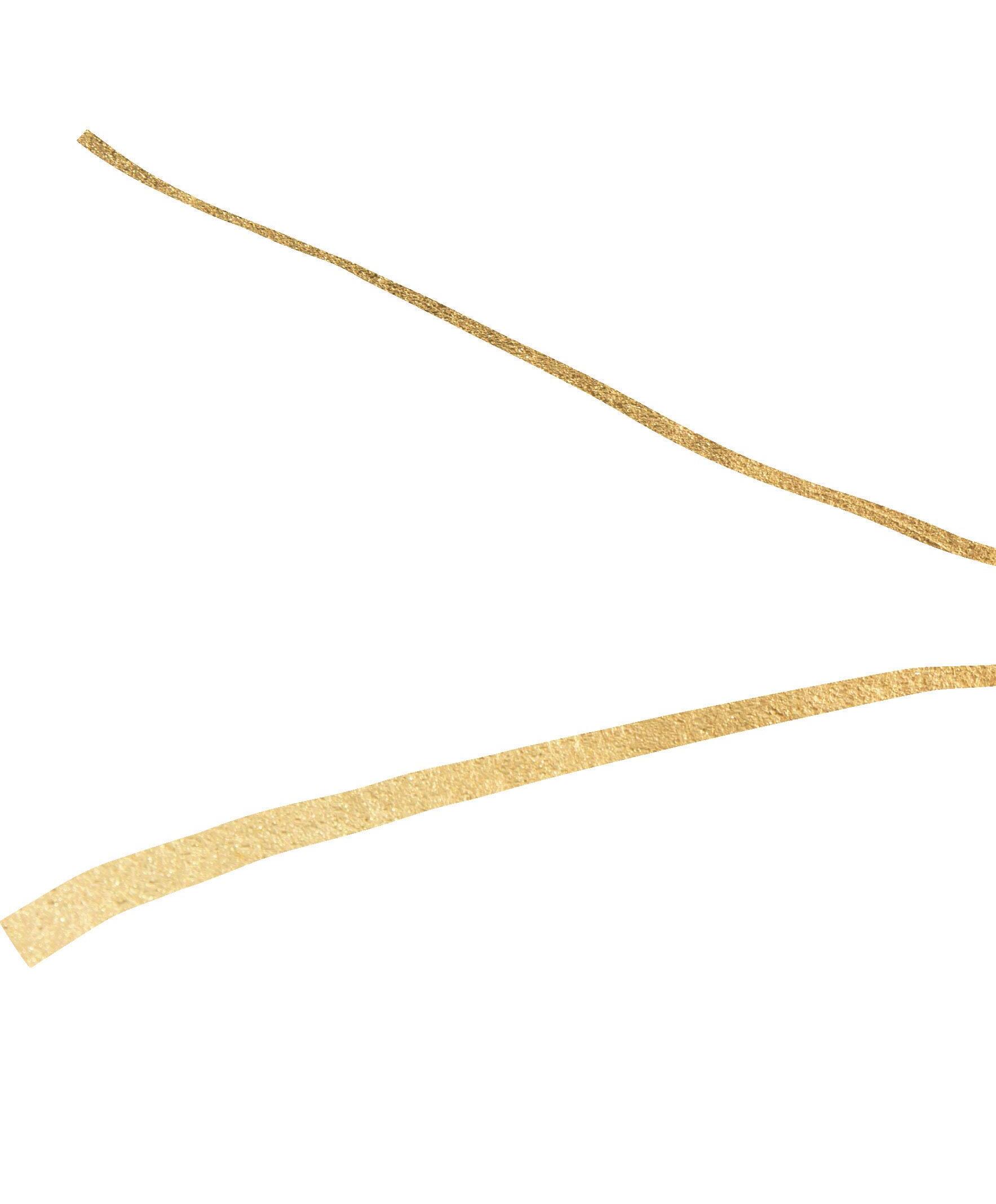
‘Lovers don’t finally meet somewhere.
They’re in each other all along’
IMAGE: PEXELS/ EUGENIA REMARK
Rumi
THE ANATOMY OF LOVE
How do relationships change over time?
Annabelle Spranklen delves deep into the science of enduring love

IMAGE: PEXELS/DMITRY GANIN

RELATIONSHIPS
Saturday night. My husband of six years and I are slouched on the sofa, tucking into bowls of chilli on our laps, watching The White Lotus, surrounded by discarded toys. We’ll be going to bed in an hour, so this is our Prime Time. And by ‘going to bed’, I mean ‘sleeping’ – no hanky-panky here, thank you very much.
It’s a far cry from our first meeting in a student nightclub fifteen years ago, downing unidentifiable cocktails and making out whenever we damn well pleased. In those hazy days, we’d stay awake all night watching films, too intoxicated by a gushy, intense romance to sleep. After a month apart during the holidays, I remember my stomach leaping into my mouth when I finally saw him. Running into his arms. That kiss. That hold.
Now I get stomach flutters when I realise it’s time to do nursery pickup or when I press ‘send’ on emails chasing clients for payment. Those flutters might not relate to my husband anymore, but we’re still in love and feel it most days. It’s just a different kind of love.
So how does the way we experience love – physically, mentally and emotionally – change over time? And what causes the shift from snogging on the dancefloor to a peck on the cheek before work?
‘Fluctuations within a relationship are normal and expected,’ says psychologist and coach Dr Carmen Harra. ‘Every relationship passes through good and bad stages. With time, certain situations can test the limits of one partner’s love for the other. But they can also fortify a relationship and help the couple make progress.’
We’d all like to hold on to that fresh relationship energy forever. But, at some point, most of us want more than just a good time. We crave intimacy, connection and a deep bond with our partners as our relationships mature. Like most things in life, love and relationships are not linear. They ebb and flow, with obstacles and hardships that we learn to overcome.
Neuroscientists and experts believe there are four stages of a relationship that every couple goes through, from falling in love to living happily ever after – or, at least, living happily for a while. Here are the stages they’ve found, along with ways to navigate each one.
30
'
The euphoric stage 1
‘In the beginning of relationships, it’s natural that we feel a strong physical attraction and romantic passion,’ says Suzann Pileggi Pawelski, author of Happy Together: Using the Science of Positive Psychology to Build Love that Lasts

‘When we first meet a person and feel attracted to them,’ says life coach Lyn Rowbotham, ‘this ignites a series of neurochemical reactions.’ That’s thanks to a cocktail of adrenaline, which enhances our arousal responses; dopamine, which increases the brain’s ability to feel pleasure and reward; and serotonin, which boosts our mood and sexual desire.
Neuroscientist Helen Fisher and clinical professor Lucy Brown have, for decades, studied the brain activity of people in love, from early to late stages, for their Anatomy of Love research. Brown explains: ‘In the early part of a relationship – the “falling in love” stage – the other person is the centre of your life. You forgive everything. The other person has faults, and you see them, but it doesn’t matter. Maybe they leave their dirty dishes in the sink, but they make you laugh at least daily, so it’s okay. Good things outweigh the negatives.’
Brain-mapping couples in this stage reveals what Brown calls the suspension of negative judgment: ‘Many people show a decrease in activity in the prefrontal cortex, which is the part of the brain that has to do with negative judgement.’
In other words, the longer a couple can suspend negative judgement towards each other, the better chance they have of relationship success. Couples who stay together for three years or more have the most decreased activity in this part of the brain.
For most couples, euphoria lasts from six months to two years before morphing into the next stage.
31
RELATIONSHIPS
In the early part of a relationship – the “falling in love” stage –the other person is the centre of your life. You forgive everything.
IMAGE: PEXELS/ SUBODH BAJPAI
The early attachment stage
The chemical reaction in the euphoric stage is taken over by the more evolved part of the brain that’s linked with feelings of attachment, and the attachment hormones vasopressin and oxytocin (aka ‘the love hormone’).
The signs of this stage, says Brown, are usually clear: ‘You can sleep! You’re not thinking about your partner twenty-four hours a day. It’s easier to do other things in your life.”
Couples who have been married for at least one year describe love differently. ‘It’s richer, deeper,’ Brown observes. ‘It’s knowing them better. Memories – positive and negative – have been integrated. You’ve gone through difficulties, and you’ve developed a strong attachment.’


The crisis stage 3
The third stage is often the most problematic: ‘the seven-year or five-year itch,’ as Brown puts it. Every relationship has downs and, even in the early stages, there are times when a couple will drift apart as they notice weaknesses, differences and flaws in each other and in the relationship. This is a time of disappointment, but also learning and growth.
‘Almost every relationship has a “drift apart” phase,’ says Brown. “Either you keep drifting, or you come back together. You need a crisis to get through and to be able to talk about together. You grow and change.’
Having children brings some couples closer together, or causes so much stress that the relationship begins to fall apart. But if a couple can overcome adversity here, they’ll move to the next stage.
2
4
The deep attachment stage
This is the long run: the relationships that stand the test of time. By this stage, couples know each other well. They’ve been through ups and downs and know they can deal with crises when they arise. ‘When couples have been together

for many years,’ Brown observes, ‘it’s very, very calm. And it’s secure.’
In this phase, it’s important to find ways to keep the relationship moving forward. Being comfortable with each other doesn’t mean your relationship has to be boring and routine. Interesting and exciting activities, travel plans and making time to connect through conversation can prevent you getting into a rut.
Making a long-term relationship work involves dedication, sacrifice, commitment, and affection for the other person and what they add to your world.
‘When you enter into a relationship, you increase who you are,’ says psychologist Dr Arthur Aron. ‘You take on and share in your partner’s perspective on the world, their social status, their resources. The benefits of new and challenging experiences together are enormous. And they last.’
So what do the experts believe is the key to keeping love alive?
‘Spend time doing things you both enjoy, together and individually,’ says Lyn Rowbotham. ‘Forgive each other by talking it out. And appreciate each other and show it.’
‘Try your best to be curious about your partner: ask questions, actively listen, savour their personality,’ says Suzaan Pileggi Pawelski. ‘And treasure the small moments.’
33
IMAGE: PEXELS/ DZIANA HASANBEKAVA, DMITRY GANIN, KSENIYA BUDKO
RELATIONSHIPS
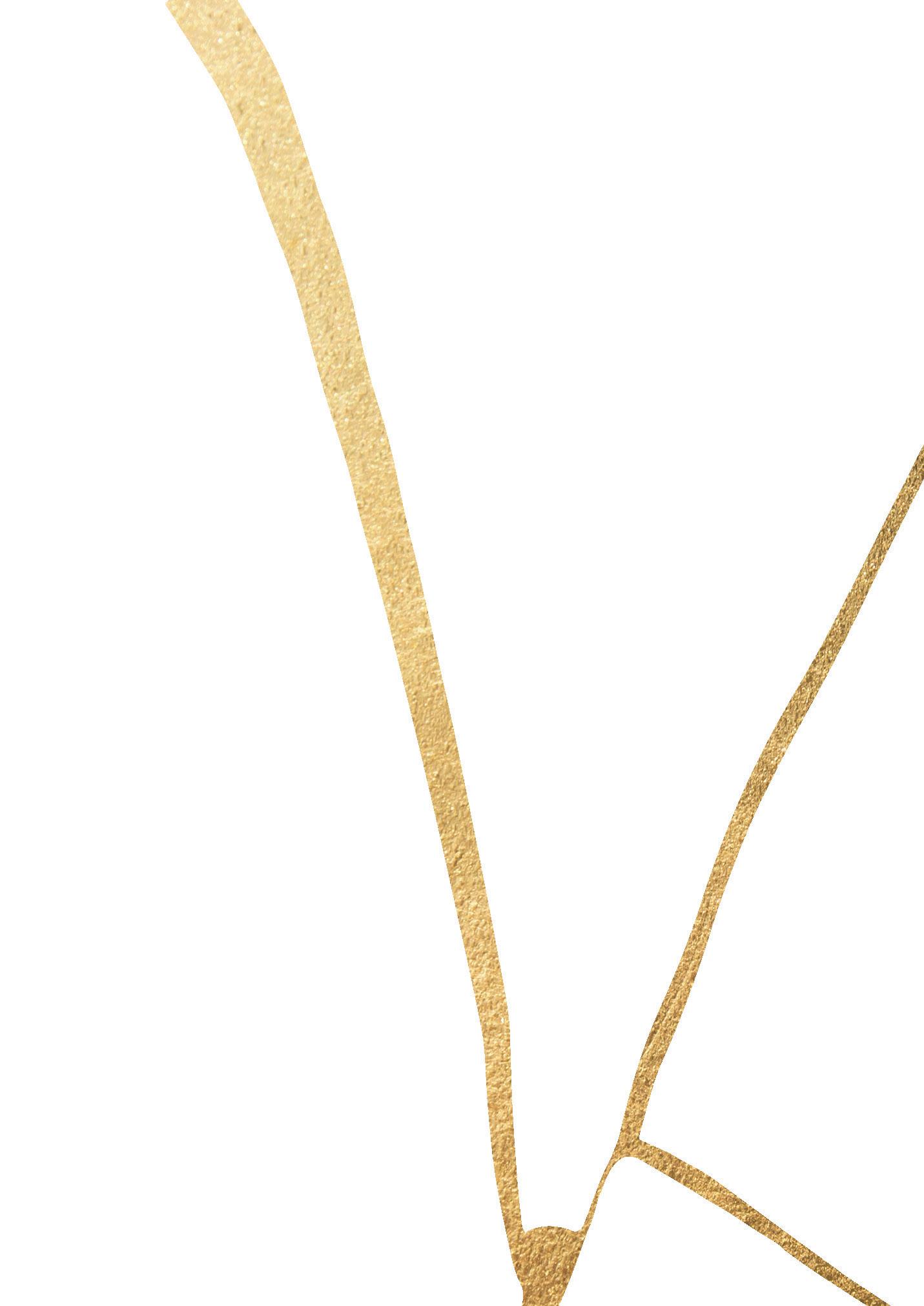
IMAGE: UNSPLASH/STIJN DIJKSTRA
‘We accept the love we think we deserve’
Stephen Chbosky


REWRITING OUR LOVE STORY
What are our expectations of love – and can we change them to create a better future for ourselves? Katie Scott investigates
Aline from a Philip Larkin poem appealed to my teenage soul: ‘Man hands on misery to man / It deepens like a coastal shelf.’ I read that poem over and over while listening to The Rolling Stones’ ‘Paint it Black’ in my bedroom, and – after yet another clash, probably with my mum – brooding on how misunderstood I was by my parents.
I know my parents love me. Mum tells me constantly. She seeks out hugs, and cries when we say goodbye. Her love, though, also burns. When I was a child, she wanted me to achieve, and was fierce in her ambitions for me. When I rebelled, the depth of her love was equalled by the strength of her anger and disappointment. When my parents’ relationship broke down, I directed anger and disappointment back at her. Our relationship had cataclysmic lows, marked by dark recriminations and gut-twisting pain, but is these days less dramatic.
Dad rarely says he loves me. I say it to him all the time; at the end of every call and whenever I see him. I don’t
36
RELATIONSHIPS


need him to say it back. Dad is a brooder. He internalises things and is embarrassed by displays of affection. He hugs me if I hug him first, and listens when I need to talk, unless an international rugby match is showing. For him, love is shown in quiet consistency.
As I’ve grown older, I’ve understood how my relationships with my parents echo their relationships with their parents. In my marriage, and when I became a mother, I heard those echoes in my interactions. I found myself saying things I had heard as a child or reacting in a way I knew someone else in my life had in a similar situation. It’s not just parroting ‘Mumisms’, but something more profound. I have internalised patterns and behaviours, and wove those into my section of the family tapestry – one that has been created over centuries.
This process of internalisation – forming templates for relationships – begins when we are babies, says psychologist Catherine Hallissey (catherinehallissey. com): ‘How a primary carer responds to a baby’s emotional distress plays a big part in the development of attachment style. When a parent is able to interpret and meet the child’s needs, and usually responds sensitively to soothe the child’s emotional distress, the child is likely to feel safe and secure in the relationship.’ This serves as a basis for relationships in adulthood and, Hallissey adds, ‘It gives us a good ability to understand our own feelings, and the feelings of others, and to respond to conflict in a healthy way.’
However, there is a flipside: ‘When a parent responds to the baby’s needs inconsistently, or in a way that is frightening, the child is more likely to have an insecure attachment style. This can lead to feelings of insecurity in intimate relationships in adulthood. The person may feel overly clingy and anxious, or they may avoid deep emotional connection, which can make it hard to maintain healthy relationships.’

»
Learning more about your attachment style can shed light on patterns that may be repeating
RELATIONSHIPS

40
IMAGE: PEXELS/TARYN ELLIOTT
We can create new models of love with our loved ones, and we can weave our own patterns
But conscious decision-making is a powerful tool. We are not, as Larkin concluded, doomed to hand on misery. We can create new models of love with our loved ones, and we can weave our own patterns. ‘If your early life experiences were less than optimal, remember there is always room for repair and recovery,’ says Hallissey. ‘We have the capacity to grow and change, and it is never too late to get the help you need to overcome those experiences.’
But this requires an honest look at our relationships – the good and the bad. That starts with our expectations: what do we give and what do we want back? ‘Learning more about your attachment style can shed light on patterns that may be repeating in – for example – your romantic relationships,’ explains Hallisey. ‘This knowledge brings with it the power to change the patterns. You can learn to support yourself
through insecurities. And when you begin to recognise and respond to your own emotional distress, you can begin to develop new patterns.’
This isn’t an exercise in pointing fingers at those who were your caregivers in early life. It is about looking at patterns that are unhelpful or unhealthy, acknowledging where they might have come from, and choosing to redesign them.
We all come into relationships with expectations and internalised models, but we have agency. For some of us, weaving new patterns is a hard-fought task that may involve having to unpick knots and tangles left by those in our early lives. For others, it may be simply adding colours to make a pattern our own. ‘Our early experiences of love have a significant impact on us,’ declares Hallissey, ‘but nothing is set in stone.’
How to repair unhelpful patterns
Don’t let difficult childhood experiences define your life, says psychologist Dr Gurpreet Kaur
l Tell yourself that you are not what you think. Thoughts are just thoughts, not facts
l Notice unhelpful thoughts that get in the way. Psychologists call these automatic negative thoughts (ANTS): unhelpful thoughts that show up every day and form a narrative
l Tell the ANTS that you know they are there. This can be hard to grasp, but there is a part of us that can observe these unhelpful thoughts. That’s the part that can be useful. We call it ‘the observing self’. The brain is a powerful machine; learn to connect with
the helping parts of it
l Next, challenge those ANTS. Tell them they are wrong!
l As you become aware of your core beliefs, you can challenge them. For example, ‘I am unlovable’ might be challenged by looking at the evidence for and against that belief. If you were in a court of law, could you prove you are unlovable?
l Work on understanding your attachment style and your love language – or simply have a conversation with yourself about how you want to show and receive love
l Take time to reflect on the above. Weekly or daily reflection is key to making changes. Offering love, when we’ve not been shown much, is not easy, but it is a journey that begins by understanding our script. Like our phone or computer software, the script our mind has created over the course of our life simply needs updating
Dr Gurpreet Kaur, clinical psychologist, drkaurtherapy.com
41
RELATIONSHIPS

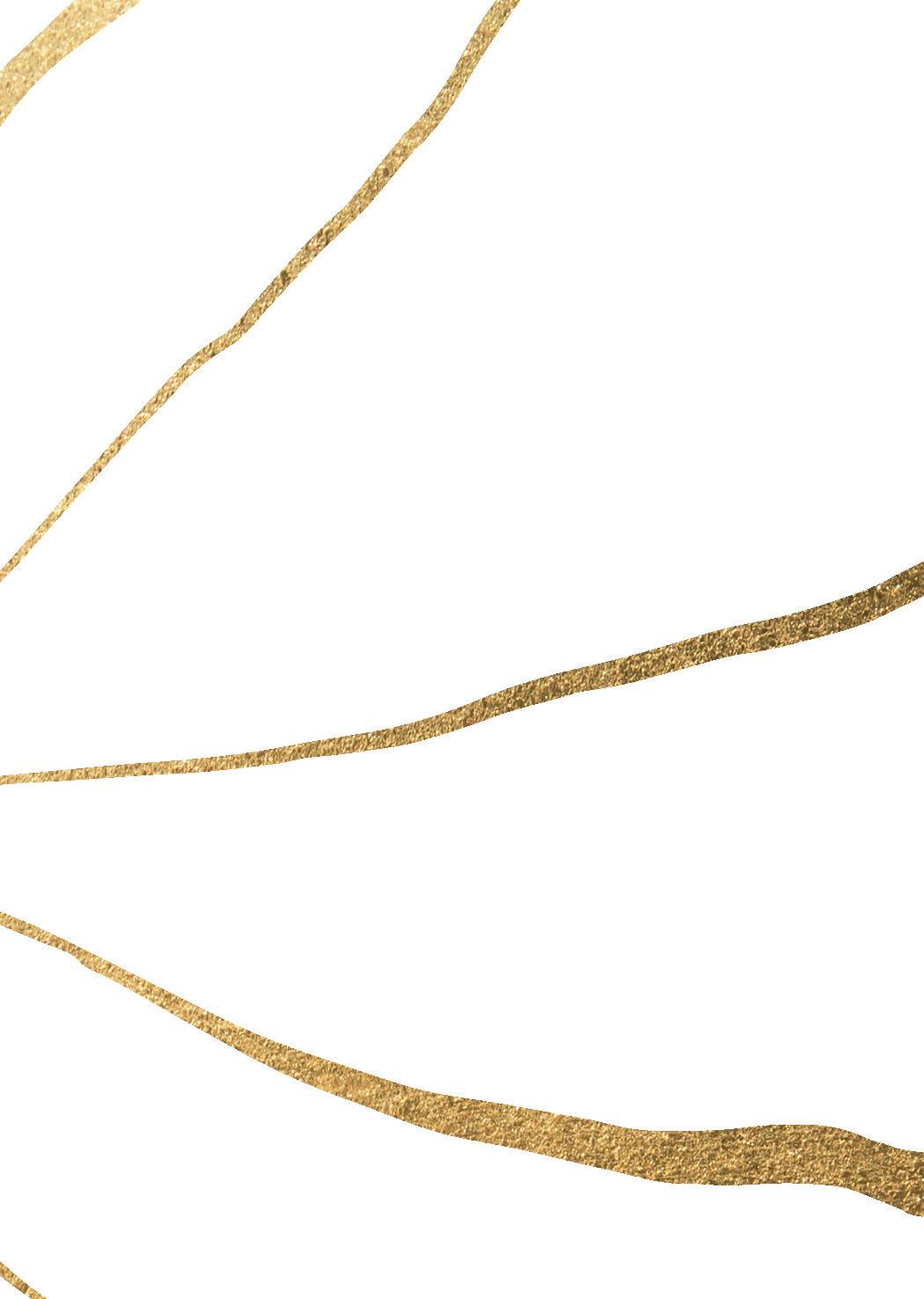
‘Being deeply loved by someone gives you strength, while loving someone deeply gives you courage’
IMAGE: PEXELS/VALERIA BOLTNEVA
Lao Tzu
GRIEF: the price we pay for love

How do we keep going when those we love have gone? Emma Winterschladen shares her findings and feelings

While staying at my dad’s house, I climbed into my daughter’s cot, to settle her back to sleep. As I lay there, nose pressed into her hair, I realised I was in the same spot fifteen years earlier – my own mum’s nose pressed into my hair, on a morning that would be one of her last.
There was nothing to do but let the grief in. The enormity of my loss – the unbelievable, unbearable truth of it – reared up angry and raw, and seemingly untouched by time.

These moments, tethered by a shared mother-daughter intimacy, were a visceral reminder of all that I’d lost in losing mum. But the grief was also accompanied by a feeling of deep love.
Moments like this can hit years later, often unexpectedly. They prove that the process of grieving never truly ends – and nor does our relationship with, and love for, those we have lost.
THE GRIEVING BRAIN
‘The brain enables you to carry your loved one with you through the rest of your life,’ writes Mary-Frances
O’Connor in her book The Grieving Brain: The Surprising Science of How We Learn from Love and Loss. Informed by more than twenty years of studying the effects of grief and attachment on the brain and body, the book offers a fascinating and hopeful insight into the ways in which love and loss are intertwined.
Grief, O’Connor suggests, is a learning process. And because the voices, quirks, touch and presence of those we love are encoded in our brain, learning to live without
them is hard. ‘For the brain,’ she writes, ‘your loved one is simultaneously gone and also everlasting, and you are walking through two worlds at the same time.’
How do we exist in two worlds? According to O’Connor, understanding that grief is a natural response to loss – and one that, for most of us, unfolds and adapts over time – is crucial: ‘You will have discrete moments that overwhelm you, even years after the death when you have restored your life to a meaningful, fulfilling experience.’
The notion that ‘grief never ends’ may feel like succumbing to hopelessness, particularly for those in its painful throes. But for me, knowing that our brains are
“Small things such as this have saved me: how much I love my mother – even after all these years.
How powerfully I carry her within me. My grief is tremendous but my love is bigger.”
CHERYL STRAYED
wired towards resilience and learning to live with loss, while never needing us to ‘get over it’, is comforting.
A CHANGING CONVERSATION
O’Connor’s book adds to a growing conversation around grief. Books, articles, podcasts, radio programmes, TV shows and even a Good Grief Festival are now devoted to the subject, with a new generation claiming their right to grieve out loud and online.

With this has come an understanding of the ongoing nature of grief; a concept that may seem directly opposed to psychiatrist Elisabeth Kübler-Ross’s ‘five stages’ model. The widespread acceptance, and subsequent rejection, of her ideas are due in part to misinterpretation of her 1969 book On Death and Dying. The ‘denial, anger, bargaining, depression and acceptance’ stages were, at the time, groundbreaking observations of those who were terminally ill and at the end of their life – not those left behind.
So what about those of us who are left behind? At the forefront of the new grief movement is comedian and author Cariad Lloyd. Her book You Are Not Alone speaks to both the personal loss of her dad when she was fifteen, and the conversations with fellow grievers on her podcast Griefcast. It offers a friendly hand-holding for those at the beginning of their grief journey, and a normalisation of
what Lloyd calls our ‘grief-mess’. You won’t find toxic positivity in her words; just reassurance that, despite our heaviest, hardest moments, there will be a time when the loss feels lighter. Lloyd is a testament to living, loving and thriving – while still grieving.
FROM GRIEF TO MOURNING

How and why we love people is unique to each of us, and so is the way we grieve them. For author and psychotherapist Juliet Rosenfeld, here lies the most profound link between love and grief: ‘Only the person suffering knows what they are feeling, just as only they really knew why they loved the person that has died so much. Eventually, we become our own grief experts.’
And yet, she says, there’s a universality in our grief – and it’s this that can help us empathise with, and support, the recently bereaved. ‘It is not a silver lining, but perhaps some way of reminding oneself of what it is to be a human –which is that we will all suffer the loss of someone we love at some point.’
Juliet’s memoir The State of Disbelief: A Therapist’s Story of Love, Death and Mourning recounts the loss of her husband and explores her slow transition from grieving to mourning. ‘It is not until we accept at an unconscious level that we will never see the person again in life that mourning starts,’ she says, ‘which is still very sad, very slow and occasionally hits us hard in the face, but allows us to gently begin to live again.’
LEGACIES OF LOVE
Learning to live after loss, for many of us, looks like living in spite of it. It looks like, eventually, being able to welcome and enjoy Good Stuff again. But a meaningful, fulfilling life does not mean one without pain and longing, and moments of really, truly missing our people. My grief is part of the fabric of my life – and the longer I live with the loss of my mum, the more familiar it becomes.
So when my ‘grief moments’ arrive, like in my daughter’s cot, as painful as they are, I knew I’ll be okay. They’re a reminder of how sustaining and sustained love can be, and how our important relationships continue to influence the way we are – long after the one we love has gone.
GRIEF
IMAGE: PEXELS/TATIANA SYRIKOVA, LARS MULDER, IVAN SMAKOV



IMAGE: PEXELS/JONATHAN BORBA
‘Nobody has ever measured, not even poets, how much the heart can hold’
Zelda Fitzgerald

50
PRAY, CONNECT, LOVE
How can love, in a spiritual sense, affect our relationships with ourselves and others? Trudie McConnochie shares her experiences

SPIRITUALITY
Love is probably the most commonly used word in pop
songs, arguably the biggest theme in literature and certainly the area about which I’m most often asked to provide insights in my role as an angel card reader and energy healer. Western societies focus on romantic love – how to get it, how to keep it and everything in between. But what I tap into when I give readings and healing sessions for clients is a more powerful, all-encompassing type of love: divine love.
What lightworkers – including myself – refer to as ‘the universe’, ‘the spirit’ or ‘the divine’ is the embodiment of love. Rather than an old, bearded guy sitting in the clouds and judging us, as institutional religion suggests, modern spirituality understands the divine to be an energy that vibrates at the frequency of love. It’s everywhere all at once, and our connection with it is unconditional.
This is hard for us to wrap our brains around, because it seems so nebulous and far from our experience. But learning to work with that energy can be transformational – and it affects all of our relationships.
HOW TO CONNECT WITH THE DIVINE
Being able to connect with the divine isn’t a special gift with which only certain people are bestowed. We /all/ have that innate ability via our intuition, but most of us don’t know it – or don’t feel compelled to explore that ability. It takes practice to connect, so don’t be put off if it doesn’t feel automatic at first.
The first step to opening the channel is to turn down the volume of other stimulus. We live in a noisy, information-soaked world, which can make it harder for divine messages to get through. Regular meditation is one way to make space for your intuition – and, no, meditation is not about shutting off your mind, which is physically impossible. But anything that brings you into stillness for a while is enough; walking in nature, doing a creative activity, writing in a journal or just sitting in reflection.
A good first question to ask is, ‘What would you like me to know?’ If you don’t get answers, that’s okay. Continue to sit – or walk – calmly and release the pressure on yourself. Intuition cannot be forced. With practice, you’ll start to feel the connection. And, over time, you’ll get better at recognising intuitive messages that emerge during your day-to-day life.
THE CHALLENGES OF CONNECTION
It isn’t easy, at first, to recognise intuitive messages. You’ll probably think you’re making them up. (I still, after many years, occasionally think that too.) But notice the feeling that goes along with them.
A common pitfall is confusing the voice of fear with that of intuition. There isn’t an easy way to tell the difference, but the way the message makes you feel is a good guide. Intuition is a deep knowingness within, usually carrying a reassuring vibration – even if the message isn’t what you want to hear.
52
SPIRITUALITY

In modern spirituality we understand the Divine to be an energy that vibrates at the frequency of love
Fear-based messages, sometimes called ‘the ego’, can be loud, panicky, ‘Hurry up or you’ll miss out’-type messages. In my experience, fear is the voice that jumps up right away when I ask for guidance. Intuition is the message that comes through when I sit and wait a little longer. And, crucially, it feels ‘right’.
DEEPENING OUR EXPERIENCE OF LOVE
So, what does connecting with the divine have to do with love on a human level? Part of what we’re all here to do, as souls in human bodies, is learn how to love ourselves and each other in meaningful ways. In so doing, we harness and amplify divine energy. The words of Sufi poet Rumi are still relevant today: ‘Your task is not to seek for love, but merely to seek and find all the barriers within yourself that you have built against it.’
Many years ago, my intuition led me to work with an energy healer practising serenity vibration healing. This works at a very deep level, to clear energetic blocks built across all lifetimes. I’d been working for some time with angel cards, a wonderful tool for identifying what to focus on, but couldn’t figure out how to work through the blocks I faced; such as fear of judgement (the stigma around spirituality was a huge barrier for me) and lack mentality. The impact that energy healing had on my life was profound, freeing me up to step into my purpose as an energy healer and manifest relationships with soulmates.
That’s one example of the sort of transformation that can happen when we work in partnership with the divine and follow cues from our intuition. The better we channel our connection to divine love, the more we embody love at a human level.
And that’s an energy we carry into all relationships. Connecting with the divine helps us understand when it’s time to walk away from relationships we’ve outgrown, and when it’s safe to open up to the right people. It points us in the direction of healers who can help us on our journey, since some healing can’t be done alone. It helps us recognise a nd act on red flags, and broach uncomfortable but necessary conversations with loved ones. And, too, it subtly inspires those around us to lift their game.
Trudie McConnochie is an Australian-based energy healer who helps people all around the world move forward in their lives. Follow her on Instagram @onegroundedangel or visit onegroundedangel.com.
54 SPIRITUALITY

IMAGES:
PEXELS/OLIA DANILEVICH, NATHAN DUMLAO, KEVIN MENAJANG
The impact that energy healing had on my life was profound, freeing me up to step into my life purpose


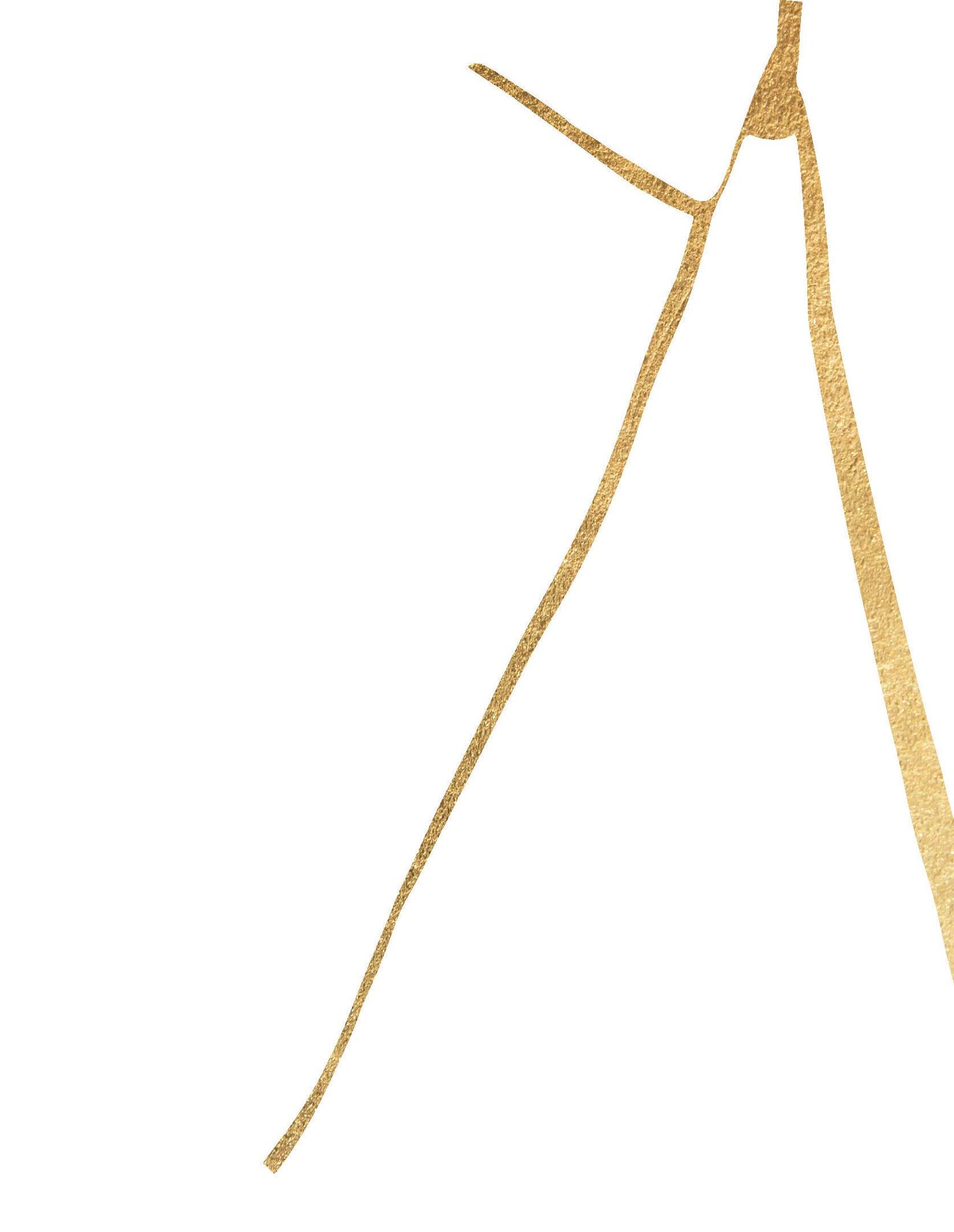
‘The best and most beautiful things in the world cannot be seen or even touched, they must be felt with the heart’
IMAGE: UNSPLASH/JESSICA DELP
Elizabeth Gilbert

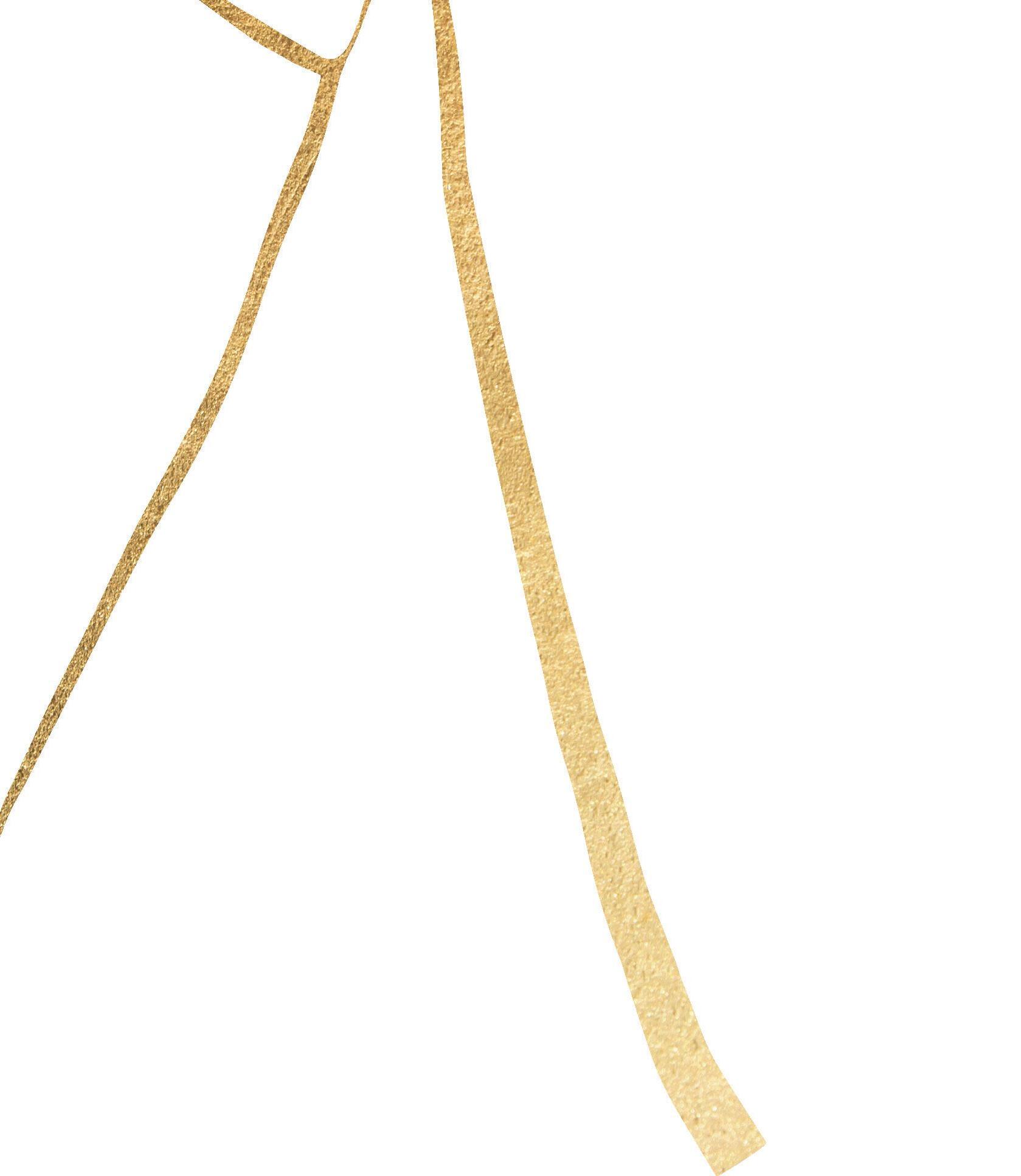

LOVE THY SELF
How can we truly love others if we don’t care for ourselves first?
Psychologist Suzy Reading explores why self-love needs to become a vital and urgent priority for all of us
We’re all familiar with the concept of self-love. But when was the last time you paused to reflect on what self-love means to you? The bottomless hole created by consumerism, the ubiquitous messaging from the hustle-and-grind and the beauty/fitness/diet culture, and society’s preoccupation with body image – all have muddied the water.
We nod in agreement with the idea that self-love is the basis for all love; that for us to care for others, we must care for ourselves. So why do women put others first so often that we fall down, or even off, our own list of priorities?
Let’s take a look at why self-love is fundamental to our happiness, wellbeing and healthy relationships, and – most importantly – how we can cultivate this skill.
WHAT IS SELF-LOVE?
Self-love is a regard for one’s own happiness. In practice, it is caring about your own wellbeing, and prioritising it. Deborah Khoshaba defined it
eloquently in Psychology Today: ‘A state of appreciation for oneself that grows from actions that support our physical, psychological, and spiritual growth.’ Self-love is fundamentally about valuing ourselves as human beings, and taking nurturing action.
But here’s the stumbling block: many of us don’t feel worthy. And we think we need to feel worthy before we can engage in self-nurturing behaviour. But my plea to you is: don’t wait to feel worthy. Nourish yourself and the feeling of worth will come. (And, whatever your current feelings towards yourself, you are abundantly worthy – right now, as you are.)
HOW DOES SELF-LOVE DIFFER FROM NARCISSISM?
Another barrier to embracing self-love is the very human desire to avoid being selfish or self-obsessed. Excessive self-love could slip into the territory of narcissism, but the two are distinct.
Self-love is acknowledging your worth as a
58
SELF

IMAGE: PEXELS/ JONATHON BORBA
human, with no need to look down on others; taking pride in your achievements while accepting all your glorious imperfection.
Narcissism is very different, with its roots in asserting oneself over others, and craving external validation and admiration. When we tease those concepts apart, it is easier to feel comfortable with self-love.
WHY IS SELF-LOVE IMPORTANT?
We need self-love to nourish ourselves; to be healthy in relationship with ourselves. A caring attitude to ourselves helps us engage in behaviours that support our wellbeing. And it dials down our tendency to self-sabotage. Self-love, quite simply, helps us identify and meet our own needs.
This doesn’t just benefit us. It benefits everyone our lives touch; we’re more likely to be kind and compassionate with others when we’re well nourished. A tangible example is sleep: giving ourselves permission to meet our sleep needs is an act of self-love. Good sleep is vital for our relationships: a Nature and Science of Sleep study found that, when we sleep poorly, we tend to interpret even neutral facial expressions as hostile. So when we take care of ourselves, we are nicer to be around and are more effective empathisers.
And we need self-love to care for others. From a place of depletion and resentment, it is hard to be in tune – let alone be generous – with our nearest and dearest. Self-love protects our relationships with other people. An appreciation for oneself is an essential foundation for honouring our boundaries with others, which promotes healthy relationships. It helps us to connect with our needs, and to articulate and honour them in a safe, constructive way. And being connected with our own needs helps us build
the skills to notice, respect and support the needs of others. It’s a beautiful win-win.
HOW DO WE CULTIVATE SELF-LOVE?
Self-love is a skill that we can all build with practice. But, before we start, it’s helpful to examine thoughts that might get in the way. Consider the following:
• How was self-love modelled – or not – for you growing up?
• What messaging about self-love have you absorbed from home life, work life, and the media?
• What associations do you make with the concept of self-love and your ability to practise it?
• Do any of these beliefs need unpicking? Come back to the definition of self-love being a tender relationship with yourself; allowing you to meet your basic needs so that you can grow and evolve. This is the fuel for you to show up as you aspire to in this world, nurturing relationships that you hold dear
• What does self-love facilitate in your life? Write down why it is okay – and indeed necessary – to commit to developing this capacity, for you and those close to you.
HOW DO WE BUILD OUR CAPACITY FOR SELF-LOVE?
If you feel overwhelmed by the idea of ‘loving yourself’, go gently. Take your time and cultivate the ability in increments. Start by checking in with yourself and noting your thoughts, feelings, sensations and emotions. Build to respecting your needs, then accepting and appreciating yourself. Feelings of positive regard will flow from this foundation.
You don’t have to feel a sense of love to behave in a loving way towards yourself. Take nurturing action and the feelings will soften and develop into a
60
SELF

IMAGE: PEXELS/ ALYONA PASTUKHOVA
You don’t have to feel a sense of love to behave in a loving way towards yourself

IMAGE: PEXELS/ ALYONA PASTUKHOVA
The mantra is ‘permission to be human’ or ‘I am learning and growing’
loving relationship.
The four pillars of self-love – identified by wellness author Katie Lips for thriveglobal.com – help us here: they are acceptance, appreciation, nurture and transformation. Like the four legs of a chair, they provide a firm foundation:
• Acceptance refers to embracing ourselves as we are, as perfectly imperfect humans. The mantra is ‘permission to be human’ or ‘I am learning and growing’, tapping into the power of self-forgiveness
• Building on acceptance, we develop our capacity for appreciation. Ask yourself what you respect or admire about yourself. Ask a friend if you find this difficult, or reflect on challenges you’ve weathered and the achievements in your life. Consider the qualities you drew on to get through those challenges
• Nurture is the active component of self-love: all the things you do daily to tend to your needs
• Transformation is the stage where we commit to significant goals, connecting with personal purpose.
WHAT DOES SELF-LOVE LOOK LIKE?
On a practical level, self-love involves how you talk to yourself, treat yourself and think of yourself. What we are aiming for is gentle and coaxing self-talk, tender and caring action, and kinder attributions to self.
Start with the commitment to gentle self-talk. With practice, we can transform our inner dialogue from criticism and judgement – which do nothing to help us grow or perform better – to the kind of language you’d use when speaking to a friend. Start with just noticing, then build to reframing self-talk as supportive statements. Don’t let failure here be another thing you beat yourself up about.
A simple strategy to create kinder self-talk is to refer to yourself by a pet name, rather than ‘you’ or ‘I’. A Journal of Personality and Social Psychology study showed that this naturally helps us be more tender with ourselves.
COMMIT TO RITUALS OF SELF-NURTURING
• Feed and hydrate yourself with care – it’s not only what you consume, but how you savour food and drink
• Clothe yourself in garments that allow you to move and breathe freely (ditch that too-tight bra!), in colours and textures you love
• Move your body in ways that feel good to you
• Give yourself permission to rest your body and mind
• Address your sleep needs
• Enjoy rituals of loving touch. This can be as simple as being mindful of how you moisturise your face and body, or taking off your makeup gently. Try this beautiful ritual to extend kindness to yourself: rub your hands together to create heat, then cradle your face in your hands. Feel the warmth of your hands on your face, how calming it feels to be supported, and the soothing sensation of your fingertips at your temples. Offer yourself tenderness with the words,
‘I am deserving of kindness. I can be my own safe place. I give myself permission to feel. I can be here for myself.’
• And get to know yourself: your strengths, your values. Rather than focusing on all the ways you want to improve, identify your strengths and get clear on what matters to you. Just as you top up your phone battery, refuel your car or reboot your computer, you can lovingly tend to yourself, free of guilt. Know that your nourishment, respecting your human needs, will help you take action in service of your values, modelling all the qualities that are important to you. Feel how this galvanises you into loving action, for your benefit and for everyone else.
Suzy Reading is a mother, an author, a chartered psychologist and a coach. She specialises in selfcare. Her latest book, Rest to Reset, is out now. suzyreading.co.uk
SELF
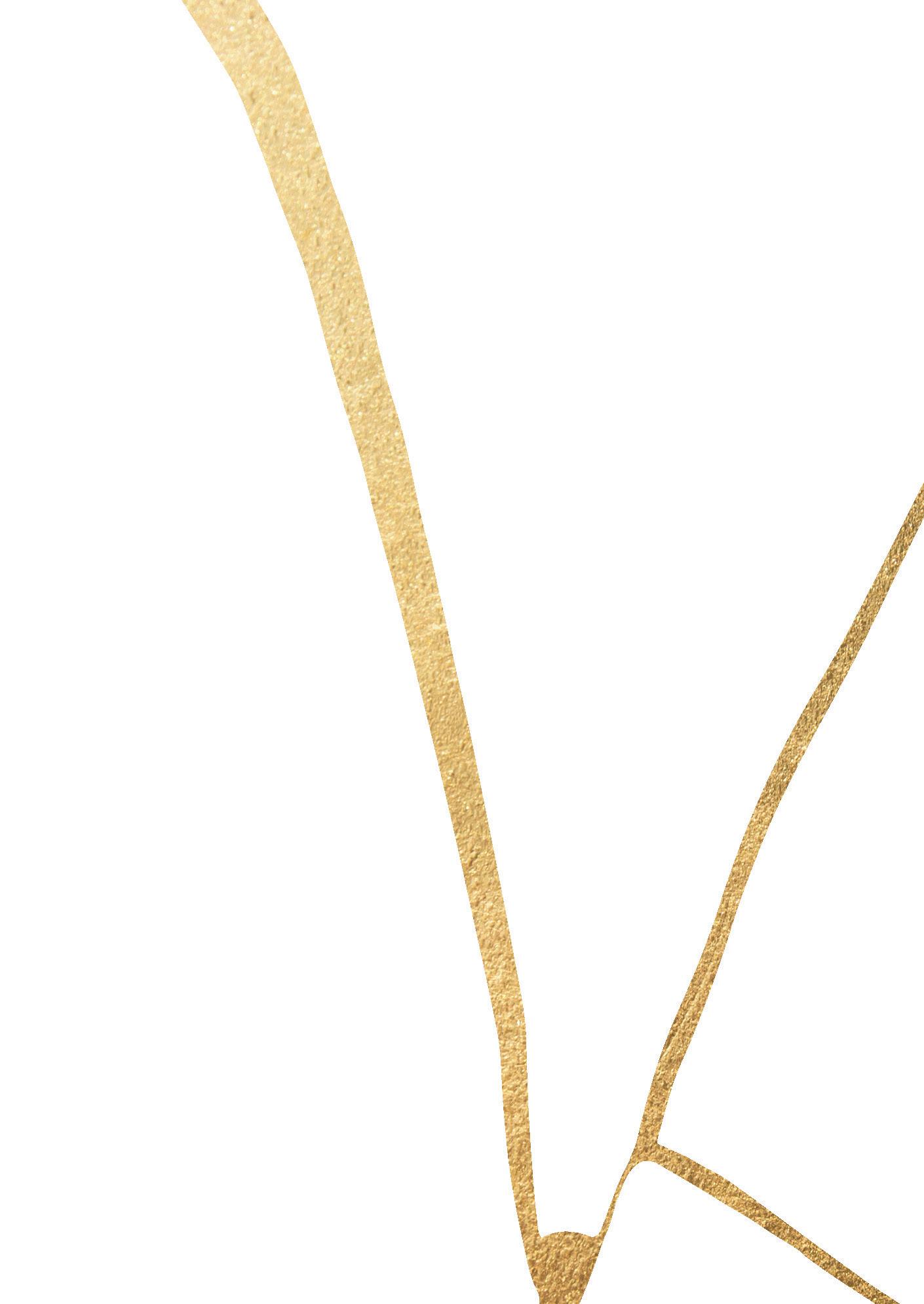
‘I have decided to stick with love... Hate is too great a burden to bear’
IMAGE: PEXELS/ TARYN ELLIOT
Martin Luther King Jr.



LOVE WHAT YOU DO, AND DO WHAT YOU LOVE
More and more of us are not content with simply working to live. We want – and deserve – to lead a more fulfilling life.
Anna Bartter explores how finding your passion can transform the dreariest of days
It was a drizzly, November Sunday morning. I was twenty-five, curled up on the sofa in my pyjamas, watching TV. Hands around a mug of tea, warm and cosy. My phone rang. It was the office. ‘Can you come in?’
My heart sank. My eyes welled with tears. It might sound insignificant but, almost twenty years on, I still get a gnawing feeling in the pit of my stomach, remembering this moment.
I couldn’t carry on. My spirit was fading, my self-esteem diminishing, toiling day after day in a job I hated.
Life rarely provides happily-ever-afters, and it’s taken time to get to a place where I feel happy and fulfilled in my work. The romantic notion of quitting a job you hate and following your dreams is not for everyone. But I’ve learned firsthand the importance of finding, or rediscovering – as we often know it already, if
PURPOSE
IMAGE: PEXELS/ ANNA SHVETS
Let go of the weight of expectation – your own and other people's
we really listen to ourselves – our passion and purpose.
I’m thankful I was able to leave that world, discovering that the benefits of finding a passion transcend simply earning a living. They create what Brené Brown describes in Atlas of the Heart as an ‘upward spiral’ of emotional and physical wellbeing.
‘When we are happy in our workplace,’ explains clinical psychologist Patapia Tzotzoli, ‘it feeds one of our most important human needs: safety. When we feel safe in an environment, we have a sense of belonging,
which makes us motivated to do our best. This in turn creates satisfaction, making us more energetic, patient and resilient. This positively affects our relationships with others, and we enjoy better physical and mental health.
‘In other words, feeling happy at work can have a positive impact not only on us as individuals but also on our social circles and community.’
It’s not always possible or realistic to leave a job to pursue a passion, but it’s important to feel a sense of fulfilment and accomplishment each day. Leaving aside the grim reality of

68
IMAGE: PEXELS/ LEAH KELLY
living costs and life responsibilities, it’s worth trying to find ways to make our soul sing.
To do this, look inwards. Passion comes from the heart, not the head. Let go of the weight of expectation – your own and other people’s. Free yourself to feel what’s right and meant for you. Be curious: trying new things and meeting new people can open opportunities you wouldn’t have even dreamed of. And who knows where they could lead?
Whatever our dream, we have to take the rough with the smooth. Finding a job that we love doesn’t mean we won’t have tough times – but it does make them worth it.
Virginia Mendez took a leap of faith when she realised her job wasn’t making her happy. Lacking purpose, she decided to step away and hasn’t looked back. ‘I am so happy now,’ she says. ‘I don’t mean every day is a good day and everything is easy. It’s not. It’s hard a lot of the time. But I love all the things that I get to do for a living: to write, to speak, to have a company designed according to my moral values. I get to help and be helped by people that I admire. And even when I feel frustrated, I can force myself to breathe and come back to my why. That fuels me.’
Dream big, work hard and make it happen. As Michelle Obama said, ‘There is no magic to achievement. It’s really about hard work, choices and persistence.’ Following our dreams doesn’t mean they will simply fall into our lap. The people who seem to be living their passion work tirelessly behind the scenes, but the old adage rings true: when we love what we do, it doesn’t always feel like work.
If life doesn’t allow a complete change, seek out small things you can do daily to increase your wellbeing. Psychologist Catherine Hallissey recommends practising gratitude: ‘Look for things about your job and your life that bring you joy. It’s important – for your overall physical health and psychological wellbeing – to focus on how to increase enjoyment in what you do for a living.’
The pandemic brought into sharp focus that nothing lasts forever, but – with open and curious hearts and minds – even endings can offer opportunity. Lean into the paths that lie before you and allow yourself to dream with gratitude and ambition. Then every day could bring fresh inspiration and spark joy. And who can ask for more than that?
HOW TO FIND YOUR PASSION
Ask for help
Few of us can follow our dreams without help and support. This might be a mentor or a coach. ‘If you’re considering changing careers,’ says Catherine Hallissey, ‘seek professional advice to help you consider all options and make a step-by-step plan to enhance the likelihood of success.’
Don’t be afraid of change
Change often requires a leap of faith. Making a move takes a brave heart and fearless mind – but the rewards are worth it. ‘I am so grateful that I was brave enough to bet on myself,’ Virginia Mendez says. ‘I gave myself permission to follow the joy.’ Outside our comfort zone is where real change can happen.
Reconnect with your inner child
Adulthood pushes our truth so far down that we forget who we truly are. If you struggle to identify your passion, think back to what brought you joy as a child. Perhaps it was drawing or playing the piano. Reconnecting with our earliest memories of contentment and fulfilment can make all the noise fall away, leaving space for us to remember what makes us tick.
Consider your values
Being truly content in our work requires doing something that aligns with our core values. ‘It is important to believe that our hard work is part of something larger and more important,’ observes Patapia Tzotzoli. ‘This is when we can truly find our purpose.’ Try volunteering or doing charity work while considering a career move; this might help you focus on where your priorities lie. Even if it doesn’t, you will achieve something great, for yourself and others.
69
PURPOSE



‘Love doesn’t just sit there, like a stone; it has to be made, like bread; remade all the time, made new’
IMAGE: PEXELS: JOAO VITOR HEINRICHS
Ursula K. Le Guin

SPRING FORWARD
Spring is a wonderful time for reinvigoration: to refresh, renew and begin again. We have selected the season’s ultimate uplifting launches – the lightweight moisturiser, the seamless cover-up, the perfect primer – to help you look towards a beautiful year ahead.
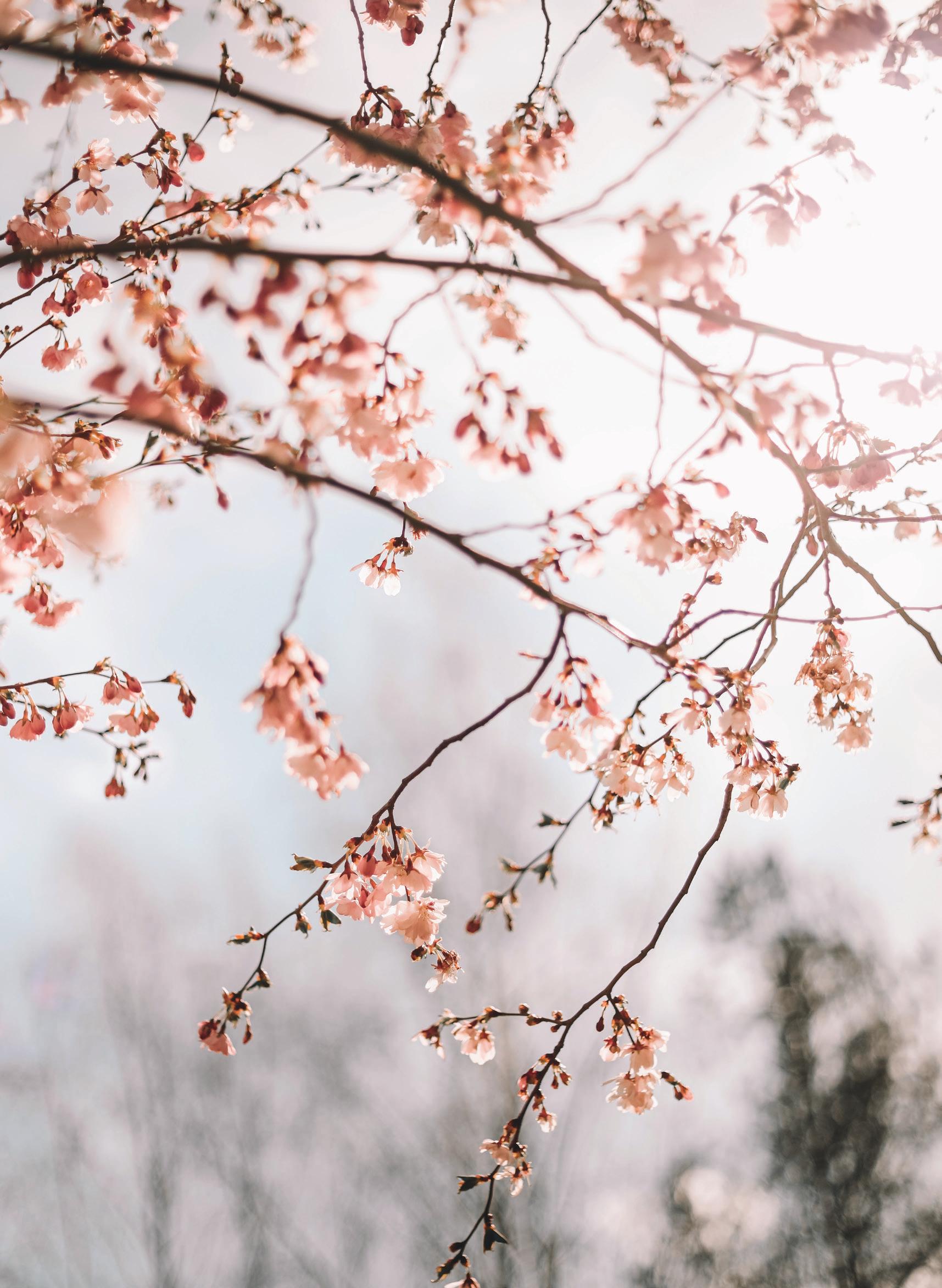 By Claire Brayford
By Claire Brayford
73 IMAGES: PEXELS/DIANA
BEAUTY
JEFIMOVA/DIANA YUSHAITE
>THE LIP MASK
Plush Puddin’ Intensive Recovery Lip Mask, Fenty Skin
Give lips a natural, fuller, smoother look with Fenty Skin’s new lip recovery. Intensive masks are currently the big trend in lip care, and this latest offering brings supercharged moisture, which hydrates and nourishes as well as leaving a clear, dewy sheen. Infused with a light vanilla scent, it improves elasticity and reduces the look of fine lines and wrinkles around the mouth. In short, it’s delicious.


THE CREAM
Pro-collagen Rose Marine Cream, £94, Elemis
Healthy skin starts with soothing, calming skincare. Enter Elemis’s Pro-collagen Rose Marine cream. Regenerating the skin’s cells and protecting from free radical damage, we love that the roses are grown on a female-led farm in the English countryside, and handpicked to capture their optimum fragrance. It is just the ticket to put some life back into skin.

< THE

FOUNDATION
Super BB Cream Au Ginseng, £42, Erborian

If you are looking for a fresh alternative to foundation, Erborian’s lightweight, fullcoverage BB cream is just that. As well as blending seamlessly, it works to improve the quality of your skin over time, so not only conceals but clearing blemishes. It is packed with hero ingredients perfect for those suffering from active breakouts, scarring or simply looking for a more even finish.

THE SERUM
Active Recovery Broth, £110, Reome

The ultimate tonic for stressed-out complexions, sitting somewhere between a serum and an essence, it calms redness, feeds the skin microbiome and also strengthens its barrier. Over two years in the making, it is formulated with 18 per cent active ingredients and is infused with hyaluronic acid combined with Snow Fungus to offer maximum hydration and cellular nourishment. We love its less-is-more approach.
< THE FRAGRANCE

Tableau Parisien, £180, Ormaie Paris
Created by the family-run maison Ormaie, these perfumes are blended using only natural ingredients and less than a dozen are used. The latest is the elegant Tableau Parisien centred around sensual red tuberose (hence the wonderful red colour), combined with notes of amber, spices and tobacco. We love the recyclable art deco bottles –perfect for sustainable dressing tables.

THE MAKEUP BAG
Makeup bag, £35, Elizabeth Scarlett
Part of that ‘spring clean’ feeling is to give your makeup bag an overhaul. Each of Elizabeth Scarlett’s designs begins with a beautiful watercolor painting that is translated onto fabric in intricate embroidery. The bags are machine-washable with a wipe-clean interior so they are safe for messy moments and a percentage of each sale goes towards protecting endangered species.

> > > BEAUTY
THE BLUSH

Pillow Talk Matt Beauty Blush Wand, £29, Charlotte Tilbury

Nothing lifts the day like a rosy cheek, and Charlotte Tilbury’s clever new blush wand is the time-saving glow no face can be without. With four flattering shades, the cushion applicator delivers a natural flush of colour that blends effortlessly into the skin and is so easy to use, you could apply it half-asleep. The blush boasts lumi-blur technology and light-reflecting pigments that give a gentle, soft-focus finish. It makes skin come alive.
THE PRIMER
Prime Time Primers, £30, Bare Minerals
This spring, Bare Minerals launches its range of skin-boosting primers with a formula for every skin type. Whether you need to minimise pores, reduce redness, hydrate, protect or simply make your makeup last, there will be a base to match. The range also includes a primer for the eyes to smooth skin and provide the perfect base with no creases.

> THE CUTICLE OIL
French Vanilla Cuticle Oil, £7, Townhouse

> THE CLEANSER Take The Day Off Charcoal
Cleansing Balm, £30, Clinique
For those who love the comfort of an old favourite, Clinique’s bestselling makeup remover has been reimagined with detoxifying Japanese charcoal. It has long been a brilliant way to reset your complexion, with safflower seed oil to help to gently dissolve makeup and grime from the day, but now the potent charcoal works to deeply cleanse and detoxify pores too. It even removes waterproof makeup.

THE HIGHLIGHTER
Positive Light Under Eye Brightener, £26, Rare Beauty
Exactly what you want from a concealer, Rare Beauty’s new Positive Light Under Eye Brightener hides and refreshes without being obvious. The ultra-fluid, lightweight texture, enriched with white peony and vitamin E, makes blending and layering quick and easy even with your fingertips. In six shades, the formula smoothes, hydrates and awakens the under eyes and we love that it lasts without creasing or caking.

Our nails need all the nourishment they can get and help is at hand from nail spa Townhouse. Its new cuticle oil, enriched with vitamin E, coconut oil and organic jojoba oil, is fast becoming the go-to remedy. Perfect for on-the-go hydration it leaves nails replenished, skin hydrated without being sticky and smells delicious too.
THE HAIR TOOL

Duet Style Hot Air Styler, £379, GHD
We could all do with a little more bounce to our day. This revolutionary device from GHD is a hot air styler that eliminates the need to dry your hair before styling. Using unique airfusion technology, it combines the power of air flow with heated styling plates to create a smooth, glossy blow-dry direct from wet hair – and the best bit? There’s

> >
IMAGES:
>
The time-saving glow no face can be without
SHUTTERSTOCK.
Love and social dynamics
How does society affect our relationships asks Dr
Asma Naheed
To modern couples, the idea of their union being influenced by outside forces is often a strange one. In today’s society, love is individualised: couples are free to date and marry for love, rather than social and economic reasons. What does society have to do with it?
And yet, traditionally, society would be the point. Marriages were arranged between families, with the individuals involved often having little choice in who they married. Marriage was seen not just as a way to create a family, but also as a way to secure a favourable political and economic relationship or alliance. This sense of obligation often meant that love was secondary to these other factors.

There are comparisons of course. In both past and present, love is typically seen as a positive emotion, something to be cherished and celebrated. However, in previous generations, love was often viewed more as a social obligation, that an individual experience. Sure, it would be nice if you loved your partner, but it’s not entirely necessary.
The world we are born into affects us in numerous different ways; society puts pressure on individuals to adhere to certain roles and mores that change with time and place. When it comes to love that society can exert a powerful force over relationships, often structured around traditional gender roles which define how partners in a couple should behave. Who stays home with the baby, who goes to work, who gets to
76 SLUG HERE
PAUSE FOR THOUGHT
travel and who needs to look after wider family obligations, even how couples should publicly show their affection to each other, can depend enormously on where and when we were born. When these affect so many major aspects in our lives – who is “allowed” to take on leadership roles, make the big decisions, or be the primary breadwinner – we need to acknowledge and question these cultural norms.

We need to look at the messages we are sending to the next generation, for example, if a man is seen expressing love too openly are we giving the message that he is somehow weak. Are we telling our children that it is a mother’s “job” to stay home all day?
The great thing today is that we have more choice than ever before. We are mostly free to make our own rules and decisions and if something isn’t working we can move those boundaries and make it fairer for ourselves and better for the future generations coming up.
Dr Asma Naheed PhD is an educational psychologist and life coach who specialises in therapeutic and behaviour management
77
IMAGE: PEXELS/IMANU MANGALASSERY

‘Have enough courage to trust love one more time and always one more time’
IMAGE: PEXELS/ LEELOO THEFIRST
Maya Angelou


Self-care vs self-love
Our columnist explores the need for self-love and self-care in our lives
My dear Kintsugi readers: this season's theme is love, likely one of the most used words in our lives. The first thing we feel when we arrive on this planet, love is a word that is heard in songs, seen on greetings cards, and used to express everything from liking a haircut (‘I love it!’) to our deepest emotional feelings. Sometimes it is a word that feels overused, but I believe that we are all seeking the fulfilment and connection that real love brings.

Though love is often used in the context of our connection to another, I would like to talk about the love we have within ourselves. To look at how we must first have self-love before we are able to execute self-care – which is really just the physical expression of our self-love.
Self-love and self-care are ubiquitous themes these days, found littering our social media platforms, TED Talks and selfhelp bookshelves. We are constantly encouraged to embrace both self-love and self-care. But do we really understand the difference between them?
Self-love is the starting point for all love. It is an act of selfcompassion and acceptance. An awareness of our own worth and determination to prioritise and protect it.
Self-care, however, is about taking action, doing things to take care of our physical, mental and emotional health. It includes activities such as getting enough sleep, eating well and doing activities that we enjoy. It is a way of honouring ourselves, treating ourselves with respect, and recognising our emotional needs.
They are distinct but related concepts. On the surface, they can appear to be the same thing. Both involve taking care of oneself, setting boundaries and preserving one’s mental,
80 SLUG HERE
UNBROKEN
emotional, physical and spiritual wellbeing. However, self-love goes much deeper than self-care. Self-love is about valuing your own worth and recognising that you are worthy of love and respect in all areas of life. It’s about forgiving yourself for mistakes, making peace with your past, and accepting your weaknesses and strengths. It’s about loving yourself unconditionally even in difficult times and cherishing the person you are becoming.
Self-care, on the other hand, is about taking responsibility for your own mistakes and insecurities, and taking practical steps to ensure your wellbeing. It’s about listening to your body: knowing when to rest and when to take action. It’s giving yourself permission to take care of yourself first.

The two are intricately entwined. It is impossible to have one without the other: when we have an unshakable self-love, we recognise that we are worthy of true self-care. Of course, this also translates to our relationships with others, as how we treat ourselves shows others how we will allow ourselves to be treated. It’s our job to make sure that that is the right way.
NAJLA’S RECIPE FOR SELF-LOVE AND SELF-CARE
1 Get enough rest and sleep
2 Eat healthy, balanced meals
3 Exercise regularly
4 Take time to relax and unwind
5 Talk to yourself in a kind and encouraging manner
6 Spend quality time with friends and family and be happy for others' happiness
7 Pursue hobbies and activities that bring you joy
8 Make time for yourself on a regular basis
9 Spend time in nature
10 Connect with your spiritual side
Najla Al Tenaiji suffered a lifechanging injury in 1999 and has since been using her recovery to inspire others through their own journeys
81 SLUG HERE
IMAGES: PEXELS/VLADA
KARPOVICH
It’s about loving yourself unconditionally and cherishing the person you are becoming
ST OR Y OF W ISD OM
Spiritual bonding


The story of how two great poets met
One day, Rumi, a famous scholar, was reading with a huge pile of books by his side when a great mystic from Tabriz called Shams –meaning 'sun' in Arabic – passed by. He asked Rumi what he was doing, to which he replied, ‘Something you cannot understand.’
Upon hearing this, Shams threw all the books in a nearby pool. But when Rumi picked them out of the water, to his surprise, the books were all dry. Shocked, Rumi asked, ‘What is this?’ to the mysterious man. ‘Something you cannot understand,’ came the reply.
When the two met, Rumi was thirty-seven years old and Shams was already in his sixties. Shams possessed a profound spiritual and philosophical knowledge and was seeking an equally extraordinary talent. He saw that spark in Rumi. The two struck a close friendship and, from there on, Rumi’s impassioned pursuit for truth and love began.
Rumi’s eternal thirst for knowledge and truth and Shams’s mysticism is what brought these two great
Rumi’s eternal thirst for knowledge and truth and Shams’s mysticism brought these two great poets together
poets together. In Persian, they are called ashiqs, which means lovers – not to be confused with romantic love, as their ‘ashq’ was a spiritual and platonic love.


It’s said that Shams taught Rumi for a total of forty days in seclusion in Konya.
After that, the master left Konya and flew to Damascus. Rumi couldn’t bear the painful separation from his guide and poured his emotions into his poetry, writing a great 70,000 verses. He wrote 3,000 poems for Shams, expressing his love and devotion for his guide. For Rumi, Shams was shining the light of the sun and drew out the darkness out of his heart.
IMAGE: SHUTTERSTOCK
84 SLUG HERE
translated as ‘The Most Loving’ . It can also be rendered as ‘TheAffectionate’ . He is faithful to his servants and shows them the purest love. He is the singular source of all love and kindness.
God
’
Often
Al-Wadūd
s name















































































































 By Claire Brayford
By Claire Brayford






























